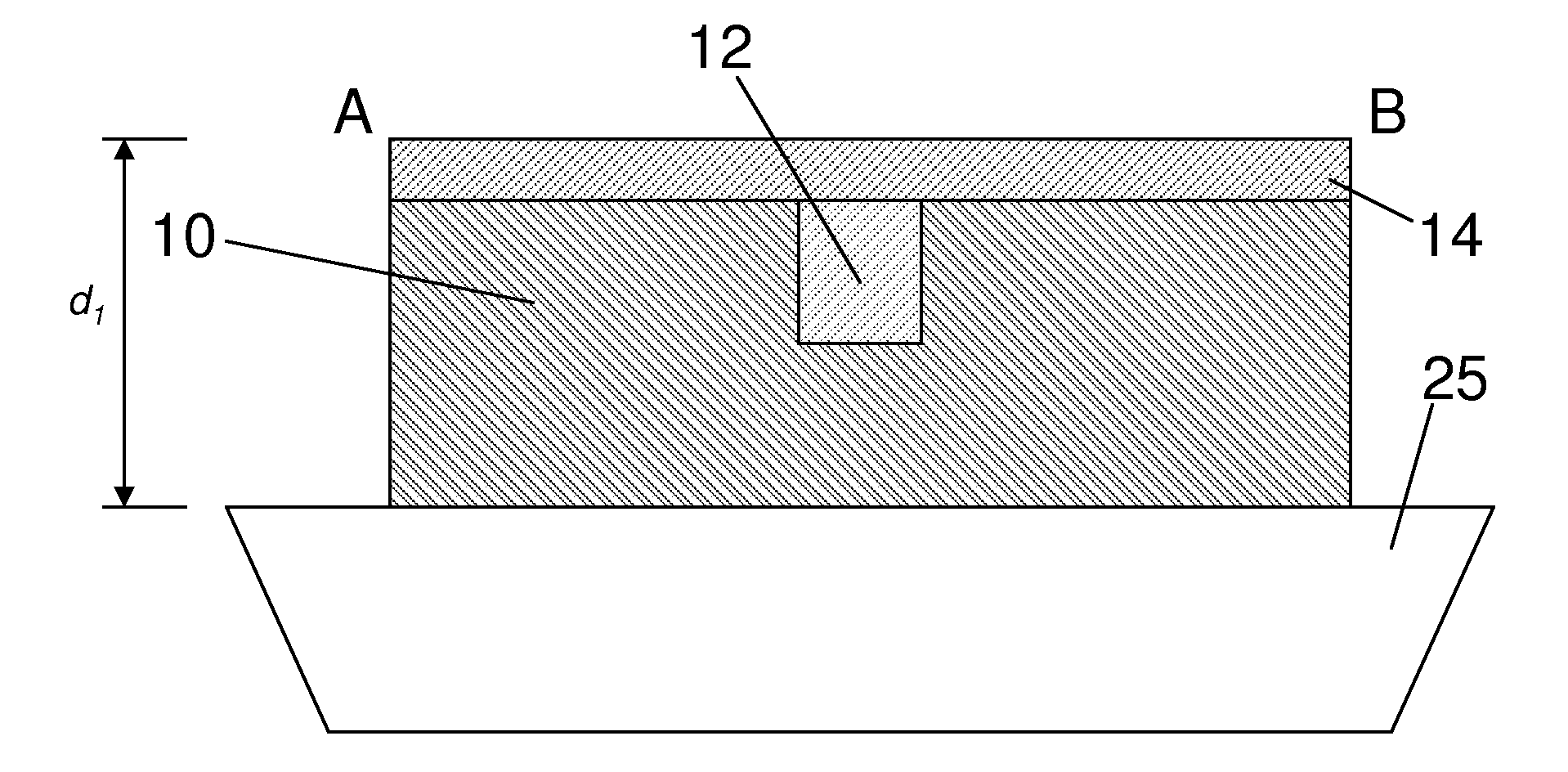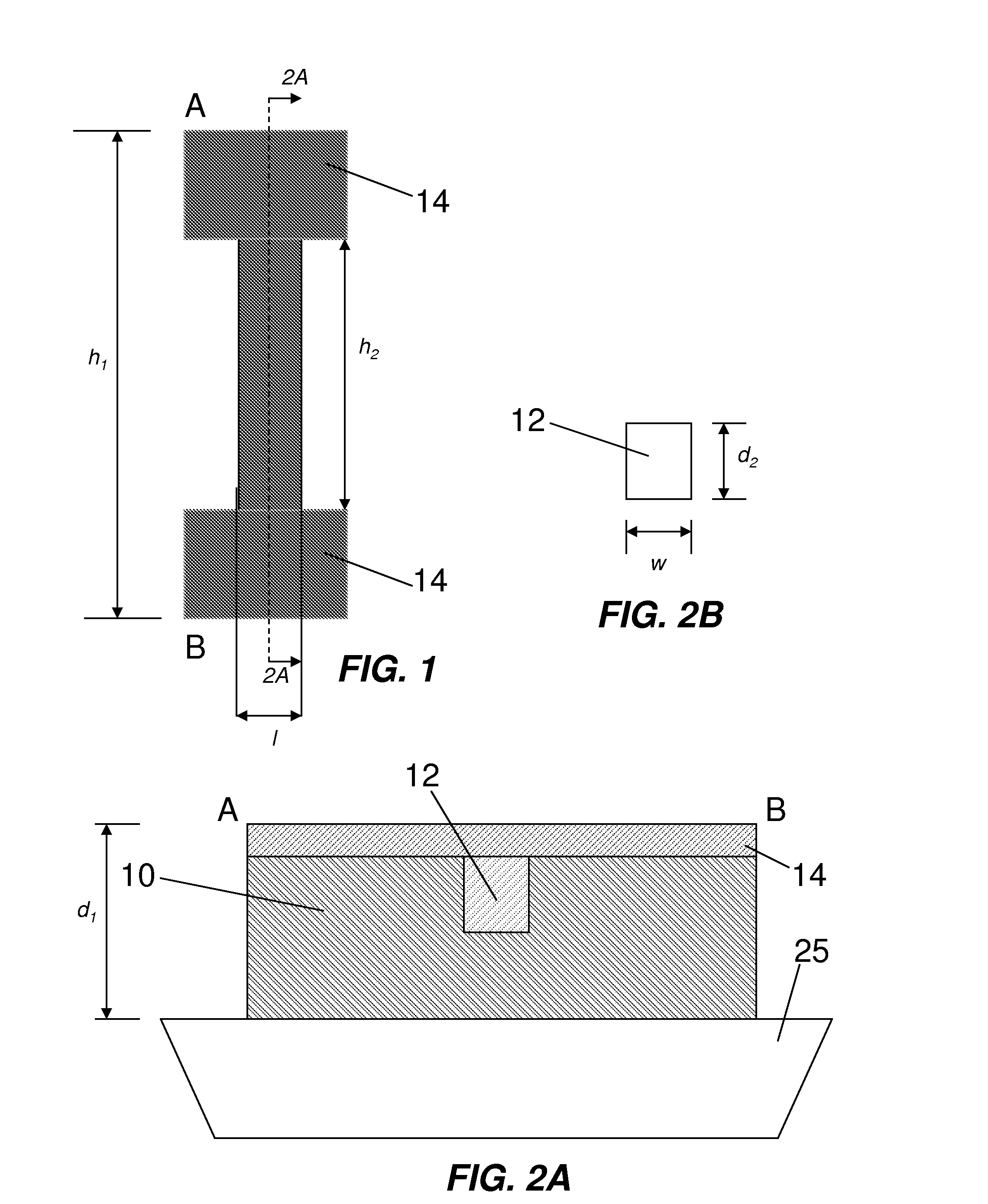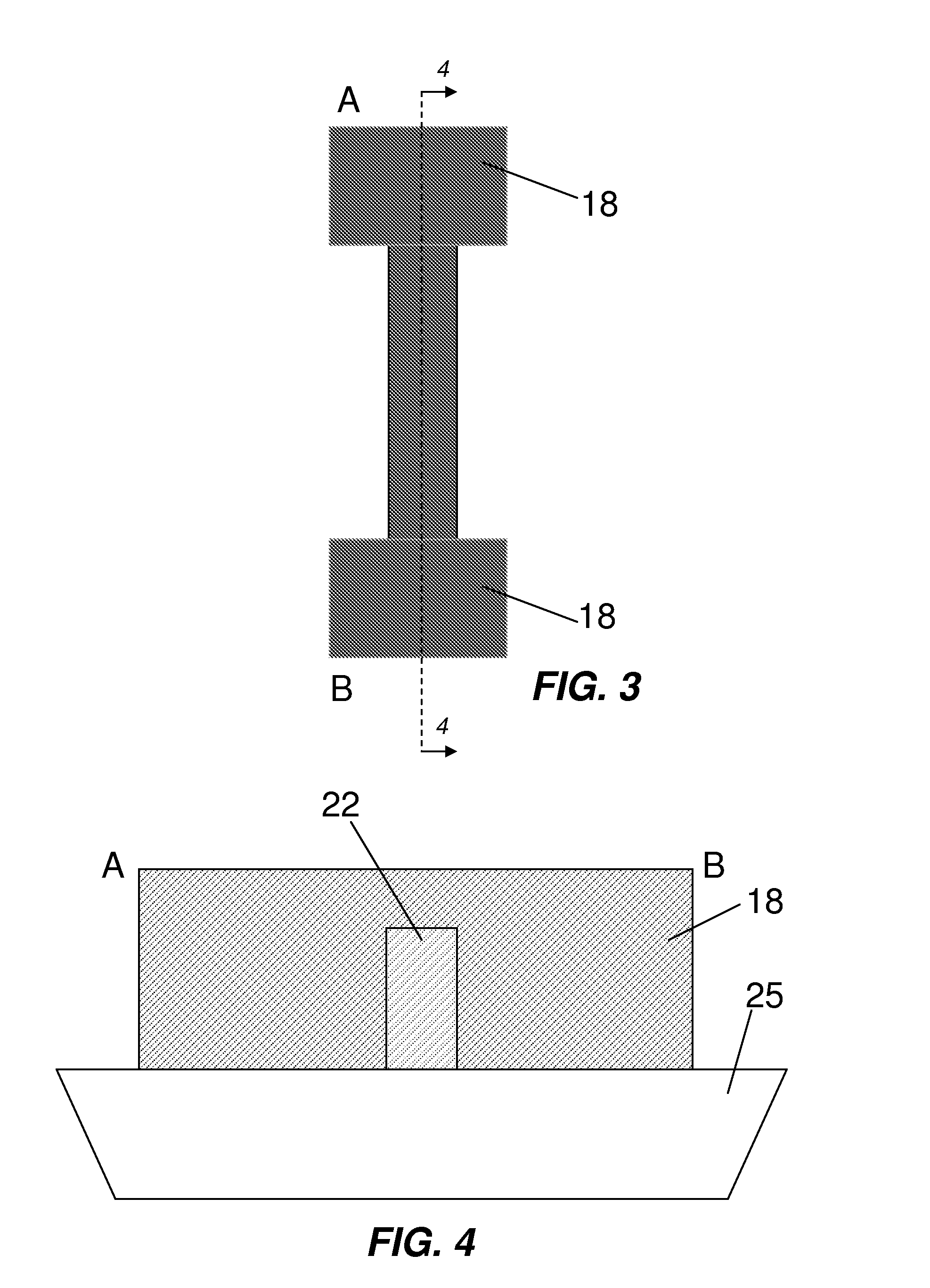Electrical Fuse Having Resistor Materials Of Different Thermal Stability
a technology of resistor materials and electrical fuse, which is applied in the direction of electrical apparatus, semiconductor devices, semiconductor/solid-state device details, etc., can solve the problems of less thermal stability, less thermal stability, and more likely to rupture the fuse in the second area, so as to reduce the voltage and reduce the risk of bursting
- Summary
- Abstract
- Description
- Claims
- Application Information
AI Technical Summary
Benefits of technology
Problems solved by technology
Method used
Image
Examples
first embodiment
[0029]FIGS. 1 and 2A show top plan and cross-sectional views, respectively, of an eFuse according to the invention. The eFuse has a resistor formed on a shallow trench isolation (STI) substrate 25. The resistor has an outer portion 10 formed of polysilicon and an inner portion 12 formed of polysilicon germanium (poly-Si(1-x)Gex). The resistor also includes a metal silicide layer 14 over the outer 10 and inner 12 portions, defining a first area of nickel silicide on polysilicon and a second area of nickel silicide germanium (NiSi(1-y)Gey) on polysilicon germanium, respectively.
[0030]As an alternative to nickel silicide (NiSix), the metal silicide layer 14 can be selected from a number of types of other metal silicides, non-limiting examples of which include cobalt silicide (CoSix), titanium silicide (TiSix), palladium silicide (PdSix), platinum silicide (PtSix), ytterbium silicide (YbSix), and erbium silicide (ErSix), where x is 0.3 to 2.
[0031]As the term is used herein, an area is c...
second embodiment
[0034]FIGS. 3 and 4 illustrate an eFuse in accordance with the invention utilizing a fully silicided (FUSI) gate. The eFuse has a resistor formed on an STI substrate 25. The resistor has an outer portion of metal silicide, such as nickel silicide 18 (NiSi), and an inner portion of polysilicon 22 formed on the substrate 25 and extending less than the full depth of the nickel silicide 18 layer. The first area is defined by the thicker portions of the nickel silicide 18, while the second area is defined by the thinner portion of the nickel silicide 18 overlying the polysilicon 22. The depth of the nickel silicide in the thin portion can range from about 10-100 nm, for example. This thin layer of NiSi is less thermally stable than the thicker NiSi portions in the adjacent areas because thin NiSi layers tend to agglomerate. Therefore, the second area is more likely to rupture than the first area upon application of a programming voltage.
[0035]The eFuse of the second embodiment can be man...
third embodiment
[0036]FIGS. 5 and 6 illustrate an eFuse in accordance with the invention. The eFuse has a two-metal resistor formed on an STI substrate 25. The resistor has an outer portion of a first metal, such as cobalt silicide 24 (CoSi2), and an inner portion of a second metal, such as nickel silicide 32. The first area is defined by the cobalt silicide 24, while the second area is defined by the nickel silicide 32. The thin nickel silicide 32 inner portion is less thermally stable than the thicker cobalt silicide 24 outer portion. Therefore, the nickel silicide 32 is more likely to rupture than the cobalt silicide 24 upon application of a programming voltage. Non-limiting examples of other combinations of first and second metals that can be used include NiSi2 and Ni3Si; W and NiSi; TiN and NiSi; and TaC and NiSi, respectively.
[0037]The eFuse of the third embodiment can be manufactured using a dual metal gate process with a replacement gate. This process is similar to FUSI except that this pro...
PUM
 Login to View More
Login to View More Abstract
Description
Claims
Application Information
 Login to View More
Login to View More - R&D
- Intellectual Property
- Life Sciences
- Materials
- Tech Scout
- Unparalleled Data Quality
- Higher Quality Content
- 60% Fewer Hallucinations
Browse by: Latest US Patents, China's latest patents, Technical Efficacy Thesaurus, Application Domain, Technology Topic, Popular Technical Reports.
© 2025 PatSnap. All rights reserved.Legal|Privacy policy|Modern Slavery Act Transparency Statement|Sitemap|About US| Contact US: help@patsnap.com



